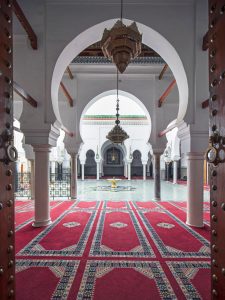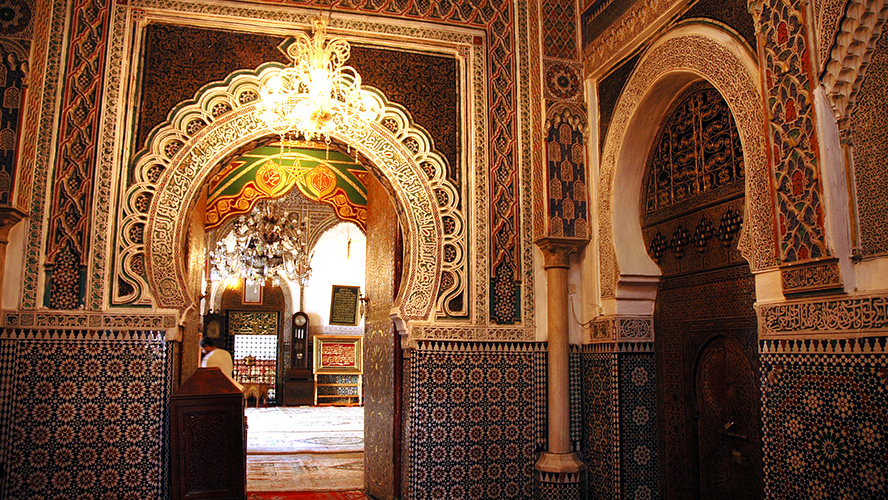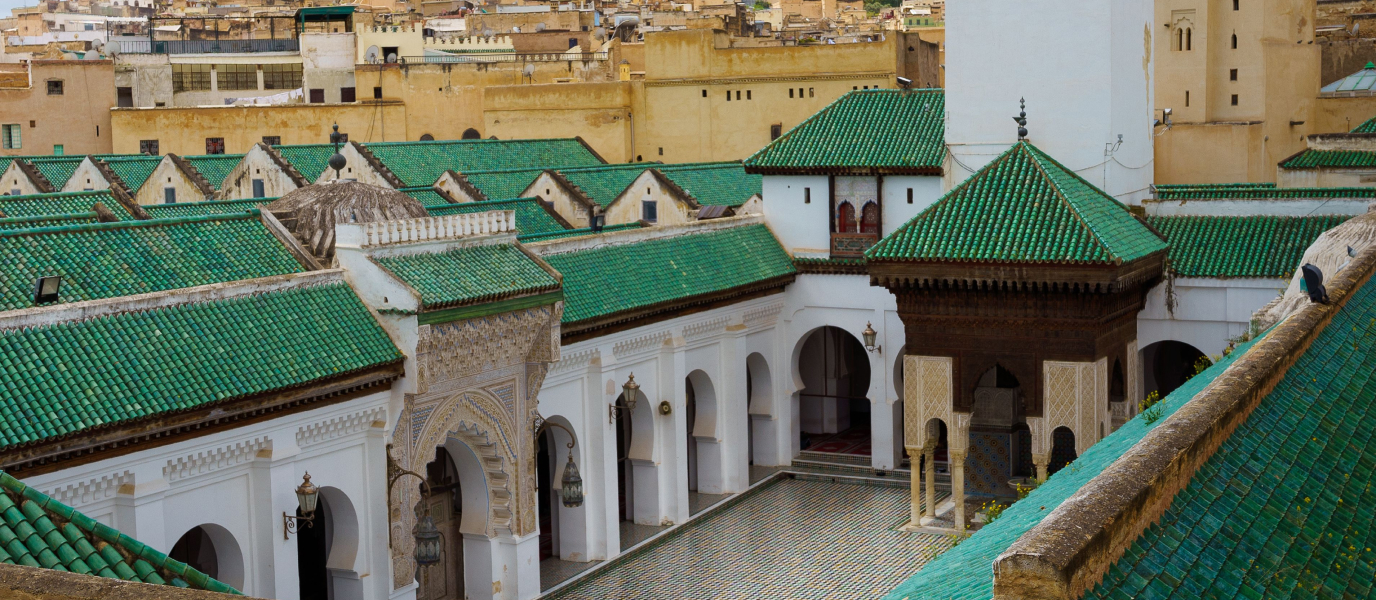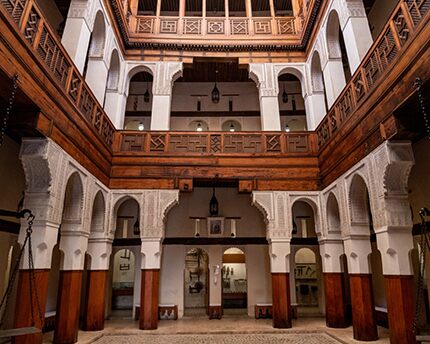One of the most emblematic holy places in Morocco is the mausoleum dedicated to Moulay Idriss II, the patron saint of the city of Fez and the most revered saint in the country. Situated on Marche Verte square, very close to Seffarine square, it is a veritable religious symbol of Islam. The shrine holds the remains of Moulay Idriss II, one of the kings of the Idrisid dynasty, whose reign took place from 807 to 828. He was also the founder of the city of Fez for the second time in 810.
To trace the reason for the mausoleum’s construction we must go back to the year 1308, five centuries after the death of the king, when his incorrupt body was found in his tomb. From 1717 to 1824 it was decided that a mausoleum would be erected as a sacred place, which is known in Arabic culture as a Zawiya. The area in which it is located is called the ‘Sacred District’ and Muslims can access the shrine 24 hours a day but not followers of other religions.
The inside of the mausoleum was created in line with Arab art, featuring an abundance of mosaics, stucco and tiles.
Historia e introducción

Moulay Idriss II is the patron saint of the city of Fez, one of the most beloved kings of Morocco and the most revered saint in the country. Thousands of Muslims visit the mausoleum every day to obtain his blessing. Devotion to Moulay Idriss II experienced an upsurge when his body was discovered intact several centuries after his death. Holding great religious symbolism for Moroccans, it also acts as a place of pilgrimage for the faithful who visit in search of protection.
Religious fervour reaches its peak during the months of September and October, as it coincides with the celebration of Moussem in his honour, when thousands of people congregate in the neighbourhood’s streets. The religious celebration is the largest in Fez and one of the largest in the country. A procession of brotherhoods goes through the medina, traditional dances and songs are performed and musical instruments are played while the musicians and the faithful are sprinkled with orange blossom water. Today, the festival is celebrated during the month of September, but the exact date varies according to the Islamic calendar.
Interior y arquitectura
The mausoleum building has a main door with three arches leading to the prayer hall, which is always covered with brightly coloured carpets surrounding a large marble fountain. From another door you can also appreciate the beauty of the mosque, which is possibly the most ornate in Fez. The colours and brightness attract the attention of anyone who passes through, boasting a fantastical array of arches, tiles, elaborate carpets and noble woods.

If you are not Muslim, we recommend that you go to any of the highest points in Fez, from which you can enjoy panoramic views of the city and see the green-tiled pyramidal roof of the mausoleum of Moulay Idriss standing tall.
Distrito que rodea el mausoleo
Located in an-Nejjarine square, the mausoleum dedicated to Moulay Idriss, also known as Dar Azaouia, is situated in the so-called ‘Sacred District’, whose streets are bound by wooden bars once used to keep out Christians, Jews and donkeys. The mausoleum is part of an architectural complex formed by the house of the Qaitoun house (where Moulay Idriss supposedly lived), Al-Ashraf mosque, the fountain and the house of wudu or place where ablutions were performed. The whole complex, also known as Al-Haram (the forbidden), constituted a place where Muslims found refuge and asylum.


































































